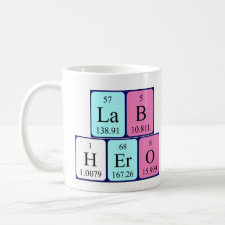
Authors: Li X, Husson SM
Article Title: Adsorption of dansylated amino acids on molecularly imprinted surfaces: A surface plasmon resonance study.
Publication date: 2006
Journal: Biosensors and Bioelectronics
Volume: 22
Issue: (3)
Page numbers: 336-348.
DOI: 10.1016/j.bios.2006.04.016
Alternative URL: http://www.sciencedirect.com/science/article/B6TFC-4K48M50-1/2/158f55627e86222a214f1b24a44ff768
Abstract: Surface plasmon resonance spectroscopy (SPR) was used to measure the adsorption kinetics and isotherms of dansylated amino acids onto surface-confined molecularly imprinted polymer films (MIP-Fs) and the corresponding non-imprinted polymer control films (NIP-Fs). The surface-confined polymer films were grafted from flat gold surfaces using atom transfer radical polymerization (ATRP). This approach allowed uniform nanothin films to be grown, thereby ensuring that the amino acids see a uniform surface during adsorption. N,N'-Didansyl-l-cystine (DDC) and didansyl-l-lysine (DDK) were used as the template molecules to form the MIP-Fs. Adsorption kinetics data were analyzed using single- and dual-site Langmuir adsorption models. It was found that, within the experimental measurement range, adsorption isotherm data were well described by any of four isotherm models: Langmuir, dual-site Langmuir, Freundlich, or Langmuir-Freundlich (LF). The relatively high heterogeneity index values regressed using the Freundlich and LF isotherms suggest the formation of fairly homogeneous MIP-Fs; although Scatchard analysis reveals binding site heterogeneity does exist. Selectivity studies showed that the MIP-Fs display cross-reactivity between DDC and DDK; nevertheless, MIP-Fs prepared against one template showed selectivity for that template. Solution pH and polymer layer thickness were studied as independent parameters to determine their impacts on amino acid adsorption, as monitored by SPR
Template and target information: N,N'-Didansyl-l-cystine, DDC, didansyl-l-lysine, DDK
Author keywords: atom transfer radical polymerization (ATRP), Binding kinetics, graft polymerization, molecular imprinting, surface plasmon resonance (SPR)



Join the Society for Molecular Imprinting

New items RSS feed
Sign-up for e-mail updates:
Choose between receiving an occasional newsletter or more frequent e-mail alerts.
Click here to go to the sign-up page.
Is your name elemental or peptidic? Enter your name and find out by clicking either of the buttons below!
Other products you may like:
 MIPdatabase
MIPdatabase









